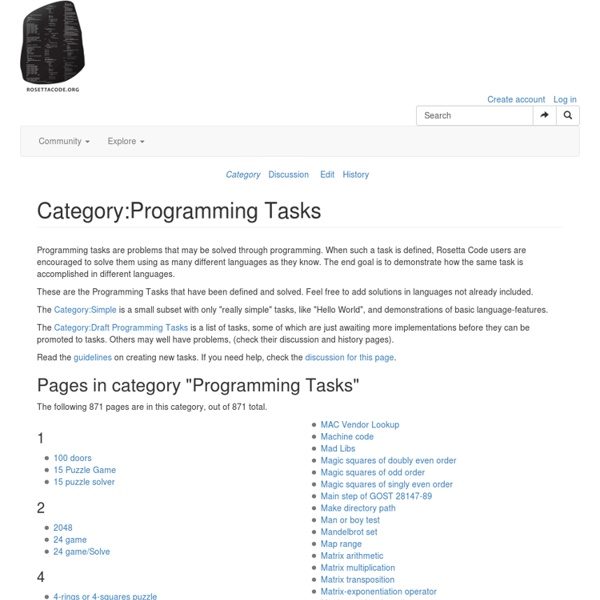4 Ways to Pick Your First Programming Language
If you haven’t picked your first programming language, the programming world is your oyster. Yet with evangelists for every language telling you their language is the best, choosing one to start with can be incredibly overwhelming. We’ve looked at the data for the top ten programming languages in the US (based on IEEE Spectrum data) to help you pick the best language to start with based on your priorities in lifestyle, location, and career potential. Python is a popular, well-paid language, being versatile enough to be used in many different applications, while Javascript is used widely across the country, and can be a good choice if you don’t want to relocate for a job. Although some newer programming languages, such as Swift, are not included, you shouldn’t discount the growth of their popularity.
A successful Git branching model » nvie.com
Note of reflection (March 5, 2020)This model was conceived in 2010, now more than 10 years ago, and not very long after Git itself came into being. In those 10 years, git-flow (the branching model laid out in this article) has become hugely popular in many a software team to the point where people have started treating it like a standard of sorts — but unfortunately also as a dogma or panacea.During those 10 years, Git itself has taken the world by a storm, and the most popular type of software that is being developed with Git is shifting more towards web apps — at least in my filter bubble. Web apps are typically continuously delivered, not rolled back, and you don't have to support multiple versions of the software running in the wild.This is not the class of software that I had in mind when I wrote the blog post 10 years ago. Why git? ¶ For a thorough discussion on the pros and cons of Git compared to centralized source code control systems, see the web.
Want to code in Fortran? Here's the very first manual!
Posted in Tech blog on October 16th, 2012 by Pingdom Chances are most of you reading this have never written a single line of code in Fortran. Chances are also that most of you use systems, perhaps on a daily basis, that somehow were developed with or run on Fortran. Yesterday, October 15, it was 56 years since the very first manual for Fortran saw the light of day, and we have it available for you to download right here.
HomePage
Déjà visites sur cette page. Nouveau : Découvrez nos kits de machines opensource et notre nouveau site dédié ! Bienvenue ! Soutenez le site www.mon-club-elec.fr ! Vous aimez le site www.mon-club-elec.fr ? Vous avez gagné du temps avec des codes trouvés sur ce site ?
Classification of the principal programming paradigms
This article appears as a chapter in , G. Assayag and A. Gerzso (eds.), IRCAM/Delatour France, 2009. The article presents and explains the most recent version of the poster. This chart is inspired by Concepts, Techniques, and Models of Computer Programming (MIT Press, 2004). This textbook presents many programming paradigms using the Oz multiparadigm programming language for its examples.
The Mind of Bill Porter
There are many ways to change an output pin. The way we know and love is the famous digitalWrite() function. (Spoiler: Want a faster digitalWrite? Download Here!) But even the Arduino Reference claims that it is not the most efficient.



